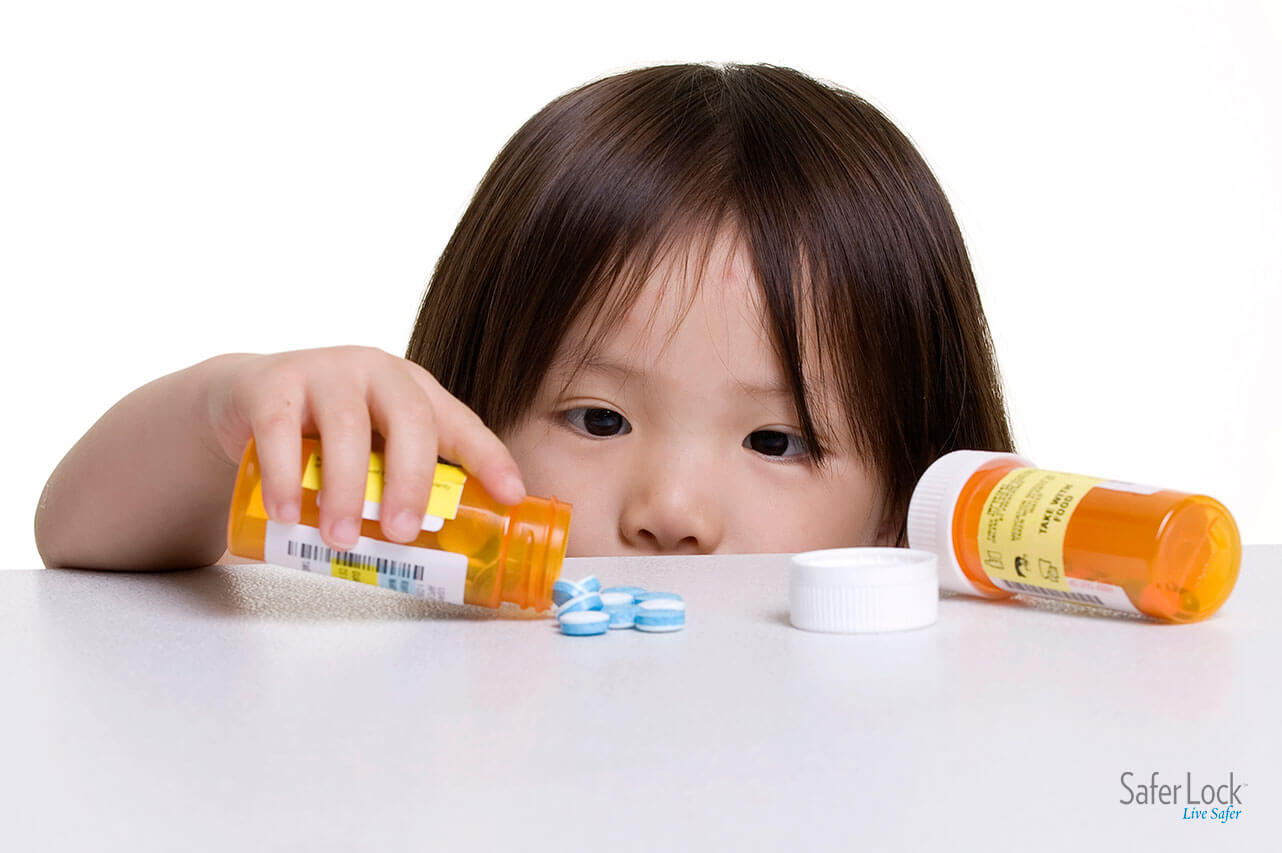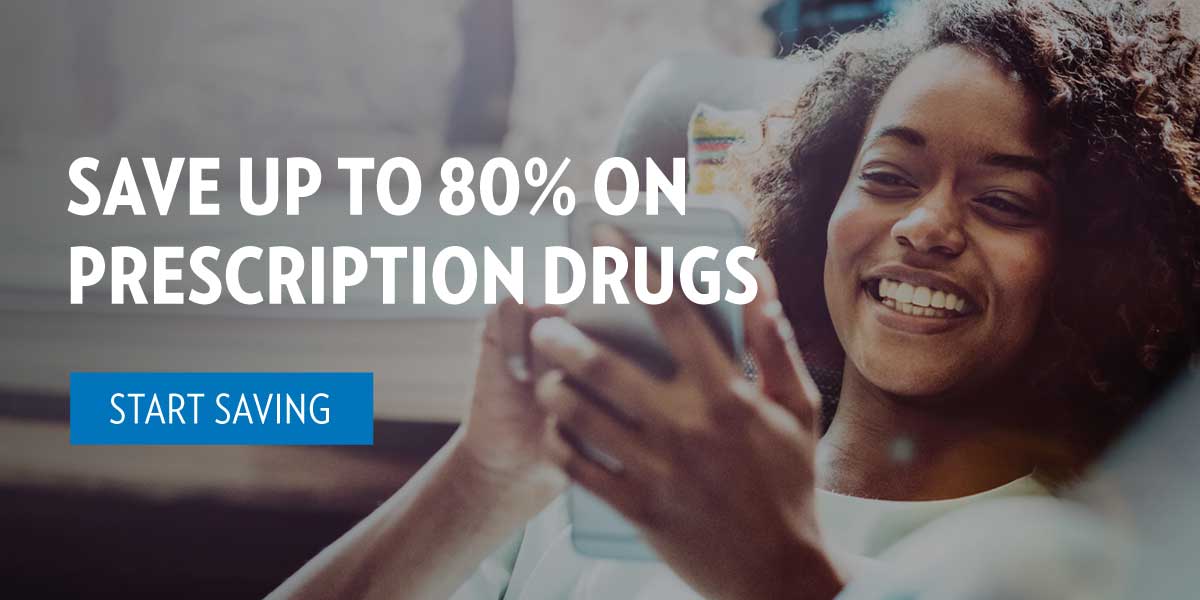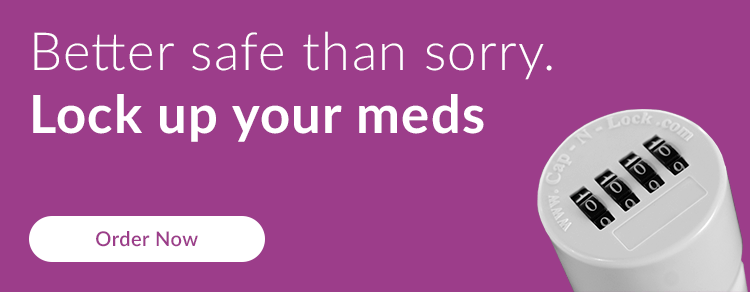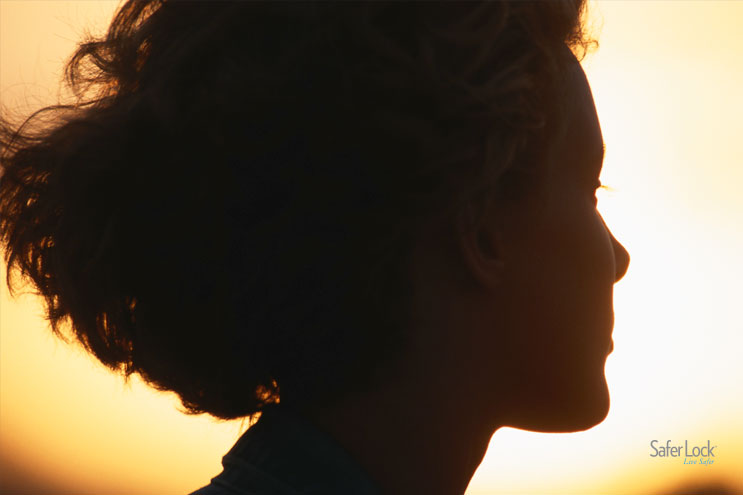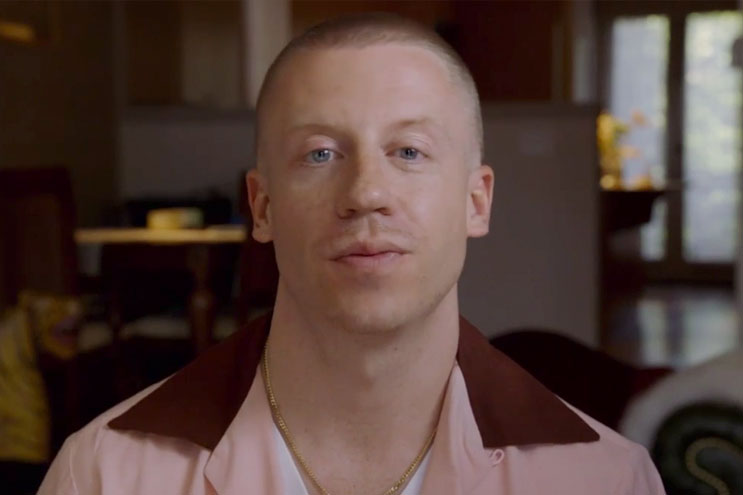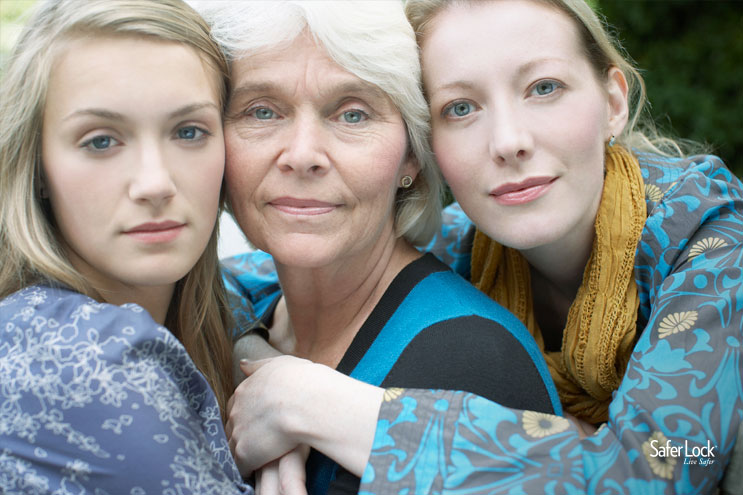Do you have prescription painkillers in your home? More than one in three Americans was given a prescription for painkillers last year. Unfortunately, many of these pills are unsecured and easily accessible to children. A study by researchers at the Johns Hopkins Bloomberg School of Public Health found that the majority of parents aren’t securing their prescription opioids at home.
The national survey found that only 31% of parents with children aged 17 and younger living in the home properly secured their prescription painkillers. In homes with older children, that percentage dropped even lower only 12% of parents with children aged between 7 and 17 reported properly storing opioids.
Why Aren’t More Parents Locking Up Medications?
The study uncovered a deep divide between parents attitudes regarding child safety and medication storage habits. While 75% of parents agreed that children can overdose on opioids more easily than adults, only 13% of respondents reportedly “worry” about their children accessing their opioid medications. Parents with older children were significantly less likely to worry about their kids accessing their medications compared to parents of younger children, the study found.
As children age, parental attitudes about safety shift from concerns inside the home to outside the home. New parents are often very thorough in baby proofing their homes to protect babies and small children from potential dangers. But as kids grow, parental concerns about safety tend to focus more on potential dangers outside of the home, such as sports injuries, auto accidents, staying clear of strangers, and getting home from school safely.
But forgetting about the dangers of unsecured opioids in the home can have dire consequences for kids of all ages.
What’s the Danger in Having Unsecured Opioids in the Home?
From 1997 to 2012, there was a 205% increase in hospitalizations from opioid poisonings in young children aged 1 to 4, according to a 2016 study published online by JAMA Pediatrics.
The study explored national trends in pediatric hospitalizations due to opioid poisoning, and revealed a 165% increase overall for all kids aged 1 to 19. The increase in poisonings was highest in two particular groups: the above mentioned group of young children age four and younger and in teenagers.
From 1997 to 2012, there was a 176% increase in opioid poisoning hospitalizations for teens aged 15 to 19.
“I believe that the two-fold increase in hospitalization rates over time for opioid poisonings in children are a direct consequence of the increasing reliance in the U.S. on opioid analgesics to treat acute and chronic pain,” said Dr. Julie Gaither, lead study author and public health researcher at Yale University in New Haven, Connecticut.
Securing medications protects young children from accidentally ingesting opioids which could lead to poisoning or fatal overdose.
And it protects teens from prescription drug experimentation and misuse that could lead to poisoning, fatal overdose, and opioid addiction.
Dr. Julie Gaither noted that “Trends we see in teens mirror what we’ve seen in adults - an increase in accidental overdoses (poisonings) from either taking an opioid as prescribed or, increasingly, using opioids for purposes other than to treat pain, including to get high or to enhance the effects of alcohol or other drugs.”
Protecting Teens from Opioid Misuse and Addiction
An average of 4.1 million people aged 12 to 25 misused prescription pain relievers in the past year, according to the US Department of Health and Human Services (HHS). The most common source of prescription painkillers for adolescents and young adults was from a friend or relative for free.
And there’s a very good chance that not all of these friends and relatives even realize they’ve become a drug supplier.
Where do you keep your opioids?
Many people keep their medications unsecured in a bathroom or kitchen. Which is why it’s a very common technique for teens to use a bathroom while at a friend or relative’s house, where they can shut and lock the door and look for medications in the bathroom with little-to-no interruption.
For teens who live in your home, it’s even easier to access unsecured opioids.
You may not even realize if one or two prescription pills were missing from a bottle that you keep in a bathroom, your purse, or the kitchen.
Opioids are potent medications and regular use (or misuse) can lead to addiction. Teens, in particular, are primed for addiction due to the unique way that the brain develops and matures. Your teen may help themselves to one or two of your pain pills for a legitimate injury. But each time they experiment or misuse one of your pills, they’re facing a real risk of opioid addiction or overdose.
What’s the Best Way to Secure Opioids at Home?
If you’ve got children in the home it’s important to secure your prescription painkillers. According to the National Safety Council, opioid medications need to be secured securely, preferably locked up just the way you would if you keep a firearm in your home.
- Choose a location in your home that is up, away, and out of sight of children and visitors.
- Secure individual bottles with a locking cap or bottle, or secure multiple medications together in a locking medicine box.
- Return medications to their secure place every time you use them.
- Don’t leave bottles out on countertops, tables, or nightstands.
- Do not keep loose pills in plastic bags or easy-to-access containers in your purse, briefcase, or travel bag.
- Use a locking bottle or locking medicine box to secure your medications on-the-go.
- Once you’ve finished taking your prescription painkillers dispose of them properly. Don’t keep extras on hand in case you need them later.
Properly securing opioids and other prescription painkillers in your home is critical to the safety and wellbeing of your children, no matter how old they are. Accidents happen every day. Just a single pill accidentally swallowed by a curious toddler could lead to opioid poisoning or fatal overdose. The first time your teen decides to help themselves to one of your pills to help with a headache or sprained ankle (or just for fun) could be the day that starts them down the hard road of opioid addiction. You can’t protect your kids from every risk they face, but you can do your part to secure your medications in your home.
